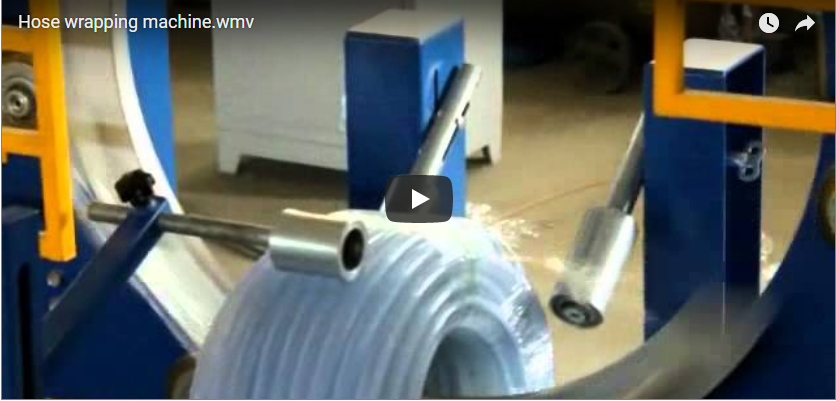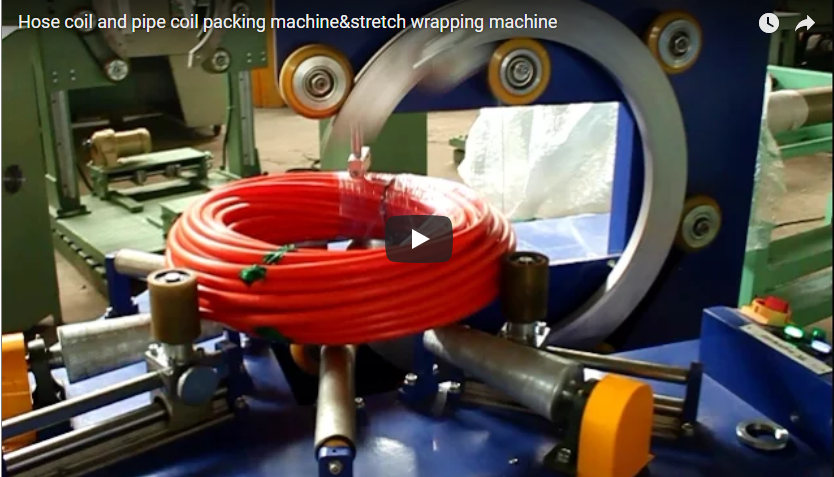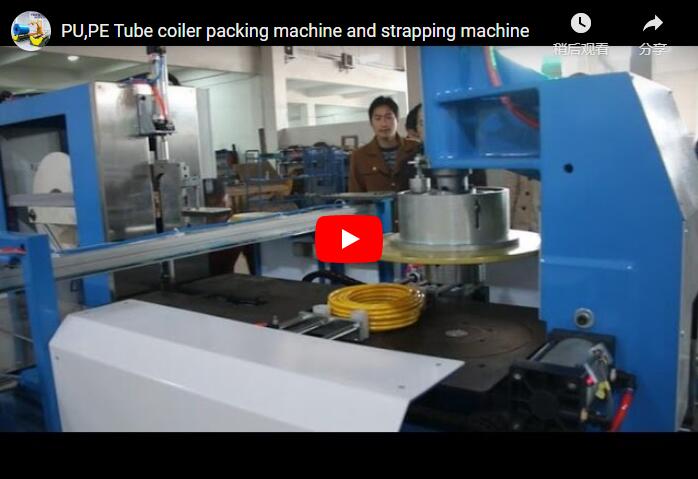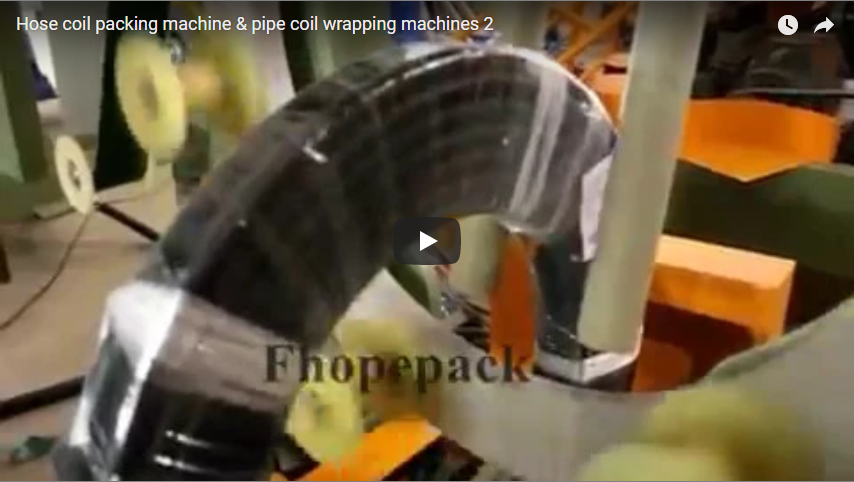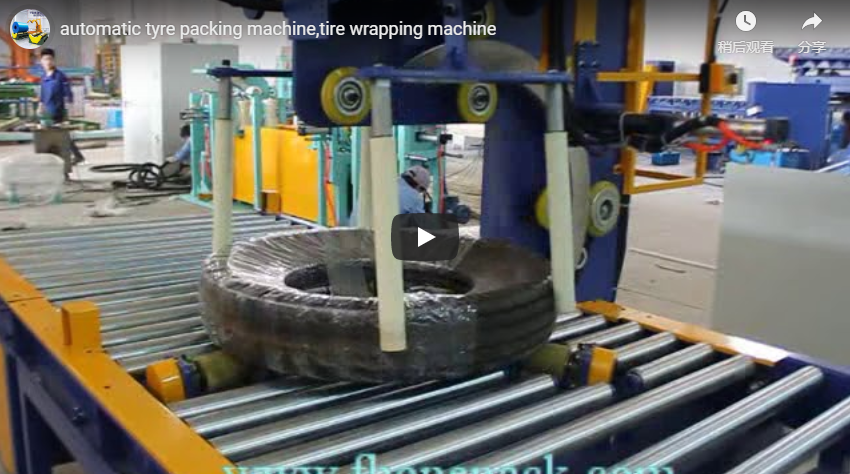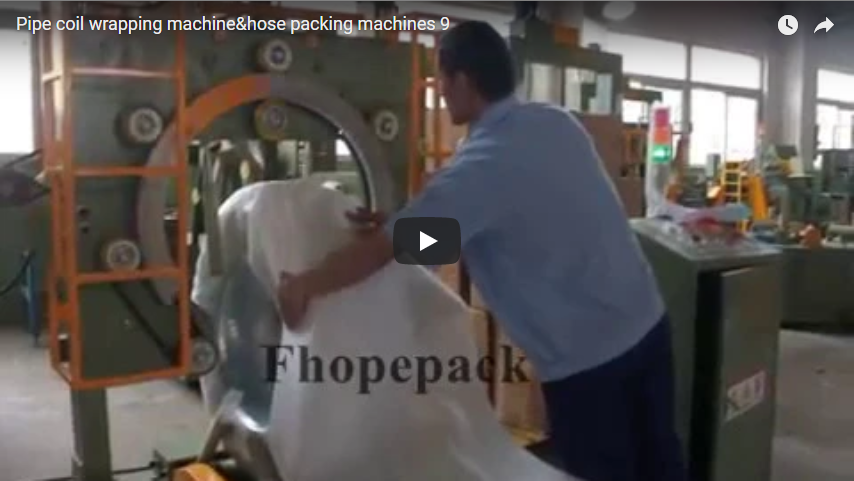Enhancing Coil Protection: A Technical Deep Dive into Automated Steel Coil Wrapping Machines
1. The Imperative of Coil Integrity in Metal Processing
In the high-stakes environment of steel production, distribution, and fabrication, safeguarding the integrity of coiled materials is non-negotiable. Steel coils, whether hot-rolled, cold-rolled, galvanized, or stainless, represent significant value. Exposure to moisture, dust, atmospheric contaminants, or physical damage during handling, storage, and transit can lead to costly surface defects, corrosion, and material rejection. Traditional packaging methods often fall short, demanding excessive labor and offering inconsistent protection. This is where automated Coil wrapping machine technology steps in, providing a robust, efficient, and technically advanced solution tailored to the unique challenges of steel coil packaging.
2. Automated Coil Wrapping: The Orbital Stretch Solution
Automated steel coil wrapping machines primarily utilize orbital stretch wrapping technology. This process involves passing a specialized packaging material, typically stretch film, through the eye (inner diameter) of the coil and wrapping it around the outer diameter in a precisely controlled spiral pattern. This method creates a cocoon-like shield, effectively isolating the steel surface from detrimental environmental factors and securing the coil layers.
3. Core Technology: Deconstructing the Orbital Wrapping Process
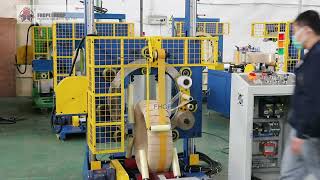
Understanding the engineering behind these machines reveals their effectiveness. Several key systems work in concert:
3.1. The Wrapping Ring/Shuttle
This core component carries the packaging material dispenser (film carriage) and rotates orbitally around the coil's axis. Design considerations focus on:
- Balance and Stability: Crucial for high-speed operation (often 50-100+ RPM depending on ring size) without excessive vibration, ensuring consistent wrap quality. Heavy-duty bearing systems and robust structural frames are standard.
- Drive Mechanism: Typically employs reliable gear motors and chain or belt drives, designed for continuous industrial use.
3.2. Film Carriage & Pre-Stretch System
Mounted on the wrapping ring, the carriage manages the packaging material roll. The most significant technological advancement here is the powered pre-stretch system:
- Mechanism: Uses two rollers rotating at different speeds (controlled electronically or mechanically). The film passes over these rollers, stretching it before it's applied to the coil.
- Performance: Common pre-stretch ratios range from 150% to over 300%. This means 1 meter of film exiting the roll becomes 2.5 to 4 meters applied to the coil.
- Benefits:
- Material Savings: Drastically reduces film consumption (often by 50-75% compared to no pre-stretch), lowering operational costs and environmental impact.
- Load Containment: Stretched film exhibits higher tensile strength and memory, creating a tighter, more secure wrap that resists punctures and prevents coil layers from shifting (telescoping).
3.3. Film Tension Control
Maintaining optimal film tension throughout the wrap cycle is critical. Too loose, and the wrap is ineffective; too tight, and it could damage the coil edges or the film itself. Modern machines use:
- Electronic Feedback Loops: Sensors monitor tension and adjust motor speeds or dancer arm positions to maintain a consistent, programmable force.
- Corner Compensation (for non-round loads): While less relevant for standard coils, advanced systems can adjust tension for irregular shapes.
3.4. Coil Handling and Support System
Securely positioning and supporting the coil during wrapping is essential for safety and wrap quality. Common systems include:
- Powered Support Rollers: Drive rollers rotate the coil slowly (if needed for certain wrap patterns) and support its weight. Often coated with durable polyurethane to prevent marking the coil.
- Conveyor Integration: Machines are frequently integrated into automated lines with powered infeed and outfeed conveyors for seamless material flow.
- Lifting/Tilting Mechanisms: Some designs incorporate systems to lift coils onto the wrapping station or tilt them for eye-vertical wrapping.
4. Material Matters: Choosing the Right Protective Layer
While Linear Low-Density Polyethylene (LLDPE) stretch film is ubiquitous, the choice of material depends heavily on the specific protection requirements:
- LLDPE Stretch Film: The workhorse material. Available in various gauges (e.g., 20-35 microns) and formulations (standard, high-performance, UV resistant). Excellent for dust, moisture protection, and load stability.
- VCI (Volatile Corrosion Inhibitor) Stretch Film: Crucial for ferrous metals (steel). VCI chemicals embedded in the film vaporize, saturating the enclosed space and forming a microscopic protective layer on the metal surface, actively preventing rust. Essential for long-term storage or overseas shipping. Conforms to standards like MIL-PRF-22019.
- Kraft Paper / Crepe Paper: Often used as an initial wrap layer directly on sensitive surfaces or for interleaving. Can be laminated with VCI properties.
- Woven Polypropylene (PP) / High-Density Polyethylene (HDPE) Fabric: Offers superior puncture and tear resistance for extremely heavy or sharp-edged coils, or where maximum durability is needed.
5. Technical Specifications & Performance Comparison
Machine capabilities vary significantly based on design and intended application. Here's a generalized comparison:
| Feature | Light-Duty / Wire & Cable | Medium-Duty / Service Center | Heavy-Duty / Mill Application |
|---|---|---|---|
| Max Coil OD | ~ 1200 mm (47") | ~ 1800 mm (71") | > 2100 mm (83"+) |
| Max Coil Width | ~ 500 mm (20") | ~ 800 mm (31") | > 1000 mm (39"+) |
| Max Coil Weight | ~ 1000 kg (2200 lbs) | ~ 5000 kg (11000 lbs) | > 15000 kg (33000 lbs+) |
| Wrapping Ring Speed | 80 - 150 RPM | 60 - 100 RPM | 40 - 80 RPM |
| Typical Throughput | 40 - 80+ Coils/hr | 30 - 60 Coils/hr | 20 - 40 Coils/hr |
| Pre-Stretch Ratio | 150% - 250% | 200% - 300% | 250% - 300%+ |
| Film Width | 50-100 mm | 76-150 mm | 76-200 mm |
| Control System | PLC + HMI | PLC + HMI | PLC + HMI (Advanced) |
| Automation Level | Standalone / Semi-Auto | Semi-Auto / Fully Integrated | Fully Integrated |
Note: These are representative values; specific machine capabilities vary widely by manufacturer and model.
6. Design Considerations and Structural Integrity
Built for demanding industrial environments, quality coil wrapping machines feature:
- Robust Construction: Heavy-gauge welded steel frames designed to withstand vibration and shock loads.
- Safety Features: Comprehensive guarding, safety interlocks on access doors, emergency stop circuits, and light curtains are essential, complying with safety standards (e.g., ISO 13849, ANSI B11).
- User Interface: Intuitive Human-Machine Interfaces (HMIs) allow operators to easily set parameters (wrap counts, overlap percentage, tension), store recipes for different coil types, and perform diagnostics.
- Maintainability: Designs often incorporate features for ease of maintenance, such as accessible lubrication points and modular component replacement.
7. From the Shop Floor: User Experience and Operational Gains
Implementing automated coil wrapping translates directly into tangible benefits experienced daily:
- Reduced Manual Labor & Strain: Eliminates the physically demanding and often ergonomically challenging task of manually wrapping heavy coils. Operators transition to supervisory roles, managing the machine via the HMI.
- Consistency and Quality: Automation ensures every coil receives the same programmed wrap pattern, tension, and number of layers, eliminating variability inherent in manual processes.
- Increased Throughput: Cycle times are typically fast (often 60-120 seconds, depending on coil size and wrap specs), significantly outpacing manual methods and keeping pace with production line speeds.
- Enhanced Safety: Removing personnel from direct interaction with moving coils and manual strapping/wrapping tools reduces the risk of injury.
- Professional Presentation: Consistently wrapped coils present a more professional image to end customers.
These machines are vital in:
- Steel and Non-Ferrous Metal Mills
- Service Centers and Processors
- Wire and Cable Manufacturers
- Tube and Pipe Mills
- Metal Stamping and Fabrication Facilities
8. Selecting the Optimal Coil Wrapping System
Choosing the right machine requires careful consideration of:
- Coil Specifications: Minimum/Maximum Inner Diameter (ID), Outer Diameter (OD), Width, and Weight.
- Throughput Needs: Required number of coils per hour or shift.
- Packaging Material: Type(s) of film, paper, or woven fabric required.
- Protection Level: Need for standard protection vs. VCI corrosion prevention.
- Automation Integration: Standalone machine vs. integration into a fully automated packaging line.
- Operating Environment: Available floor space, power requirements, and any environmental constraints.
- Budget: Initial investment vs. long-term operational savings.
9. Conclusion: Investing in Efficiency and Protection
Automated steel coil wrapping machines represent a significant technological advancement in metal packaging. By leveraging orbital stretch wrapping principles, sophisticated control systems, and optimized material usage, these systems provide superior protection against damage and corrosion while drastically improving operational efficiency, reducing labor costs, and enhancing workplace safety. For any operation handling valuable steel coils, investing in the appropriate automated wrapping solution is a strategic decision that protects assets and streamlines the path from production to end-user.
For detailed consultations on specific application requirements or machine configurations, contacting packaging automation specialists is recommended. info@fhopepack.com

